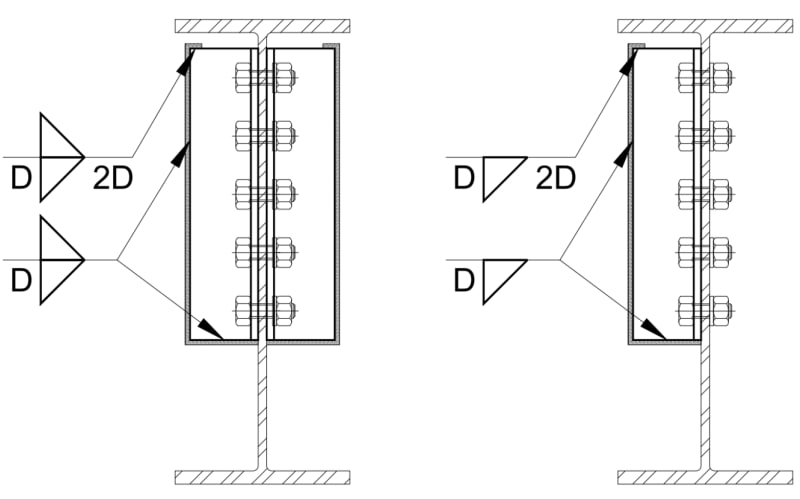Navigation
Install the app
How to install the app on iOS
Follow along with the video below to see how to install our site as a web app on your home screen.
Note: This feature may not be available in some browsers.
More options
-
Congratulations waross on being selected by the Tek-Tips community for having the most helpful posts in the forums last week. Way to Go!
You are using an out of date browser. It may not display this or other websites correctly.
You should upgrade or use an alternative browser.
You should upgrade or use an alternative browser.
Student Thread
- Thread starter dik
- Start date
- Status
- Not open for further replies.
JoshPlumSE
Structural
Dik -
I believe the issue is the "rotational ductility" aspect of AISC simple shear connections. Meaning, if they are too stiff then they won't behave like a simple shear connection.
The AISC code provision is J1.2: Simple Connections:
I believe the issue is the "rotational ductility" aspect of AISC simple shear connections. Meaning, if they are too stiff then they won't behave like a simple shear connection.
The AISC code provision is J1.2: Simple Connections:
...Flexible beam connections shall accommodate end rotations of simple beams. Some inelastic but self-limiting deformation in the connection is permitted to accommodate the end rotation of a simple beam.
- Thread starter
- #3
Thanks Josh... well aware of that. My response was predicated on 'my' use of end plates. I would never use them for shear only connections, hence my being unaware of any code restrictions on maximum thickness.
By attaching the end plate to the full W section, you are inviting attracting moment. I might use a partial height end plate (for shear only). I'm not aware of a condition where I would use an endplate as shown, except maybe for torsional loading. In that instance I would design the connection as required. For a normal shear connection, I would likely use a couple of clip angles as shown below:

The detail is from an Adobe 'rubber stamp' I made up to use on shop drawings I review.
-----*****-----
So strange to see the singularity approaching while the entire planet is rapidly turning into a hellscape. -John Coates
-Dik
By attaching the end plate to the full W section, you are inviting attracting moment. I might use a partial height end plate (for shear only). I'm not aware of a condition where I would use an endplate as shown, except maybe for torsional loading. In that instance I would design the connection as required. For a normal shear connection, I would likely use a couple of clip angles as shown below:

The detail is from an Adobe 'rubber stamp' I made up to use on shop drawings I review.
-----*****-----
So strange to see the singularity approaching while the entire planet is rapidly turning into a hellscape. -John Coates
-Dik
I use shear end plates from time to time. To ensure enough rotational flexibility, I check the AISC Manual (16th) Equation 9-52.
Like in your double and single angle figures above, the idea is to ensure the end plate can bend out of plane to allow most of the simply supported beam end rotation develop and avoid a beam end moment.
It's not clear to me from the OP's question whether this is a shear or moment connection. He or she seems to have gone poof, so I guess that's that. LOL
Like in your double and single angle figures above, the idea is to ensure the end plate can bend out of plane to allow most of the simply supported beam end rotation develop and avoid a beam end moment.
It's not clear to me from the OP's question whether this is a shear or moment connection. He or she seems to have gone poof, so I guess that's that. LOL
- Status
- Not open for further replies.
Similar threads
- Locked
- Question
- Replies
- 2
- Views
- 19
- Locked
- Question
- Replies
- 20
- Views
- 58
- Replies
- 7
- Views
- 8
- Replies
- 3
- Views
- 4
- Locked
- Question
- Replies
- 1
- Views
- 4
